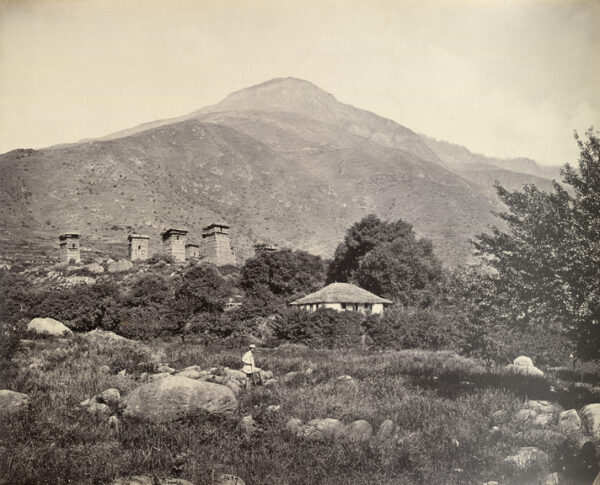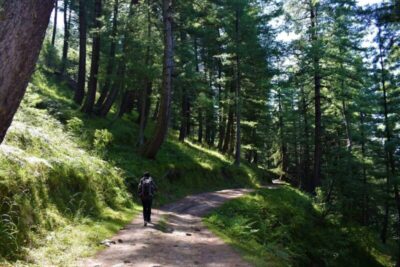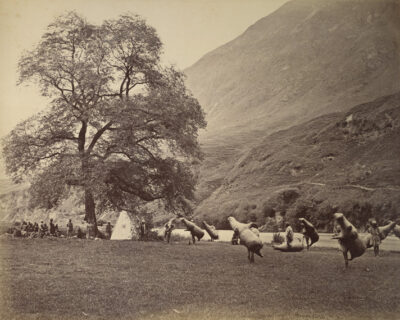Himachal
Places to visit
Basheshar Mahadev temple of Bajaura

Not many are aware of this oldest and archeologically most significant stone temple of Lord Shiva in Kullu.
Once upon a time, Bajaura in Kullu district of Himachal Pradesh was a place of quite an importance. Situated on the border of Mandi and Kullu and on the bank of Beas river, a fortified Bajaura lied on a trade route that connected the neighbouring Mandi and the plains beyond with the Kullu valley and further up, the Ladakh Himalayas. Bajaura word itself seems to have come from ‘Bazaar’ meaning a ‘market.’
When there were no roads, Bajaura was the first place the visitors and traders used to reach after entering Kullu via Dulchi Pass, the oldest and one of the lowest mountain passes at 2788 meters that connects Kullu with Mandi and remains open throughout the year.

It was by this route that the first Western travellers — William Moorcroft and George Trebeck — had entered the Kullu valley in the monsoon of 1820.
But what really makes Bajaura stand apart is its historically and archeologically significant stone temple — the Basheshar Mahadev temple.
How to reach Basheshar Mahadev temple
Dedicated to Lord Shiva, the Basheshar (Visvesvara in Sanskrit or the ‘Lord of the Universe’) temple of Bajaura is the largest stone monument in Kullu. To reach here, you need to arrive in Bajaura, which is situated near Bhuntar and Kullu towns. A short walk for around 200 meters on a narrow path, off the main road in Bajaura, leads you to this temple.
When was the Basheshar Mahadev temple built?

There are at least 20 stone temples in Kullu. The Bajaura stone temple is the oldest and also the most significant.
English writer Penelope Chetwode, who visited Kullu in the 1960s, writes in ‘The End of Habitable World’ that these temples were built “in an effort by the then Rajas to popularise the worship of Lord Vishnu in the valley in place of the indigenous rites and rituals of local deities that involved animal sacrifice.”
However, art historians and archaeologists don’t agree on the date of the Bajaura temple.
While epigraphist J Ph Vogel does not mention when the temple was built stating that “we possess no data, apart from the evidence of style, to settle the chronological problem,” according to French archaeologist Odette Viennot, this stone monument dates back to late 8th or early 9th century when King Lalitaditya ruled.
Art historian Madanjeet Singh forwards the date to 11th century in his book ‘Himalayan Art’ when he says that such stone strictures were carved by Pala sculptors in the 11th century when people fled and took refuge in the hills following invasion of Kannauj by Mahmud of Ghazni in 1018.
German art historian Hermann Goetz writes in ‘The Early Wooden Temples of Chamba,’ that the sculptures at the Bajaura temple are ‘perhaps from the 11th century.’
So, a safe conclusion can be drawn that the temple seems to have been built between the 8th and 11th century, making it at least 1000 to 1300 years old.
Architectural style of Basheshar Mahadev temple

Located near the bank of Beas river, the temple has an imposing structure with ‘unusually fat tower’ or shikhra. A repeated pattern of exquisite carvings of pot and foliage runs along the outer walls of the temple. On the four sides, above the porches, rise miniature towers with sunk Bhadramukha in the centre, showing three faces of Lord Shiva (creator, protector and destroyer) on each side.
The exterior of the temple is decorated with carvings of Naga couples with interlaced snake tails, Kinnars in fond embrace, birds and elephants.



A Linga occupies the sanctum sanctorum, the place of worship, which measures not more than 8’6” by 7’2”. There are two female figures — Ganga and Jamuna — on the front porch of the temple that personify the two rivers.

On the remaining three corners of the temple are placed in the niches the figures of Lord Ganesha, Lord Vishnu and Goddess Durga.
The south side niche of the temple is occupied by the figure of elephant-headed Ganesha, seated on a lotus throne and supported by two lions. The height if the slab is 3’10” and width is 2’5”.

On the back or West niche of the temple is the beautifully carved image of Lord Vishnu. The four-armed God holds a wheel (chakra), lotus flower (padma), in his right hands and a mace (gadda) and conch shell (shankha) in his two right hands.

The third sculptor, placed in the North niche, is that of Goddess Durga in the act of slaying a demon. The Goddess is eight-armed and with one of her hands she plunges a trident (trishul) into the body of the demon, while three other hands hold a thunderbolt, an arrow and a sword.

Dutch archaeologist and epigraphist J Ph Vogel, who had done an extensive study on this temple, writes in his paper ‘The Temple of Mahadeva at Bajaura,’ which was published in the Archaeological Survey of India’s annual report of 1909-10, “the temple of Bajaura is of great archaeological interest as temple towers of this type, built entirely of stone, are as rare in the hills as they are common in the plains.”
Even AFP Harcourt, who served as the Assistant Commissioner of Kullu from 1869-71, considered the temple ‘most notable.’
Harcourt writes in his book ‘The Himalayan Districts of Kooloo, Lahool and Spiti’ that of all the temples in Kullu “The Bajaura one is at once the most notable for its ornate carvings and the figures portrayed on the outer walls and entrance are, I think certainly equal to anything of the sort I have seen elsewhere in India.”
According to traveller William Moorcroft, who was the first one to document the Bajaura temple during his visit in 1820, the noses of sculptors at the temple were mutilated by the army of Kangra.
Moorcroft writes in his book ‘Travels in the Himalayan Provinces of Hindustan and the Panjab’ that “there were many images, most of which were in good preservation, except their noses, which were said to have been knocked off by the soldiers of the grandfather of Sansar Chand, when he invaded Kulu.”
A protected monument
Though declared a protected monument by the Archaeological Survey of India (ASI), the temple landscape has been changing for the worse. A lot of construction activities in recent years in the vicinity of the temple appears like an eyesore. Houses have come up right at the back wall of the temple of such archaeological and historical significance. Even the ASI’s weather-beaten signboard at the temple premises, declaring the structure to be a protected monument, requires to be replaced.
References:
‘The Temple of Mahadeva at Bajaura,’ by J Ph Vogel in the Archaeological Survey of India’s annual report (1909-10).
‘The Himalayan Districts of Kooloo, Lahool and Spiti’ by AFP Harcourt.
‘Travels in the Himalayan Provinces of Hindustan and the Panjab’ by William Moorcroft and George Trebeck.
‘The Early Wooden Temples of Chamba’ by Hermann Goetz,
‘The End of Habitable World’ by Penelope Chetwode.




